The Tascam 388
- shedshrine
- deaf.
- Posts: 1868
- Joined: Tue Jun 01, 2004 5:47 pm
- Location: sf bay area
When the 388 was being developed, they used the Maxell UD 35-90. 407 is the Quantegy equivalent, Both work fine.tascaman wrote:Two more questions:
Maxwell UD 35 - 90. It was described here that it was the tape that was built for the machine, vice versa... Is it still ok to use, or is 407 and 457 better?
The 388 can also be set up to run +6 tape like Quantegy 457 and it's equivalent RMGI LPR35. If you get your deck setup, Tascam support and the tech who worked on mine recommend setting it up for these hotter +6 tapes as they will give you more headroom.
If you are going to use dbx, you are only going to want your levels to average at 0 db so the dbx doesn't mistrack and cause nasty artifacts.
However, if you want to bypass the noise reduction on record and playback and get highest signal to noise possible without it, you will appreciate the higher headroom.
Or mix'n'match. For example, use the dbx on 1-4 and off on tracks 5-8, whatever suits the track.
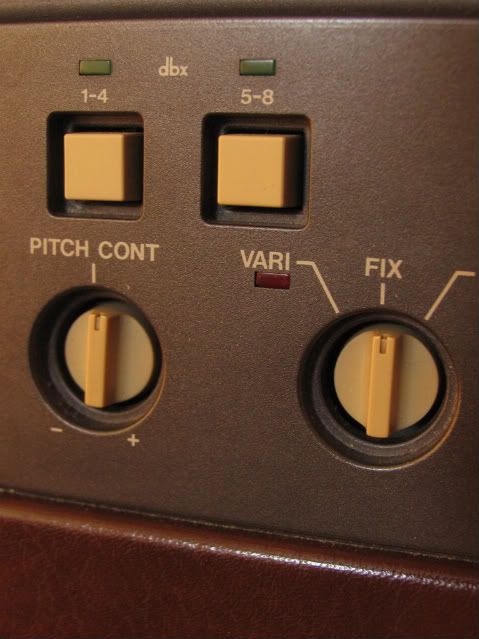
_______________eh91311 wrote: The 1.0mil thick 7" tape stocks (Quantegy 407, 457, RMGI LPR35) is thinner than 1.5 mil thick types (Quantegy 456) and more subject to print-through, or "ghosting", which basically is hearing sound from previous tracks' recordings on playback. Store the tape tails-out, which means play through to the end, store that way, rewind to the beginning to use; this can help deter print-through.
Avoid Ampex and save yourself the heartache. Even if you bake a sticky-shed reel, it will regress to it's pre-baked condition, so don't bother. People pretty much only bake to make a reel playable and transfer pre existing recordings that would otherwise be lost.tascaman wrote: Also, what is/is there a difference between Ampex 407 to Quantegy 407? I have heard that Ampex tape has the sticky residue these days, and it is best that you bake it before use.
Thanks,
Conrad
Quantegy is not producing at the moment/ever again(?) depending on who you talk to.
RMGI-EMTEC is the alternative now.(and locating good condition non sticky-shed used tape).
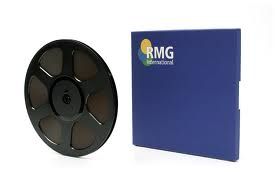
"This is the long awaited RMGI-EMTEC LPR35 from Holland and is the replacement for Maxell UDXL35 and AMPEX (QUANTEGY)457 open reel tape, yet you can record 3 dB hotter on this tape than the Maxell. This precision slit and coated tape is similar to 457 in operating level (+6), and is being made by some of the same people and on most of the same equipment that made the famous EMTEC LPR35 in Germany. This tape is the same as SM911 except on a thinner long play 1 mil base. Each tape has 1800' of 1/4" 1 mil back coated tape on a standard 7" plastic reel in a standard RMGI-EMTEC box. Made in Holland."
--------------------------------------------------------------------------------
Ampex/Quantegy vs RMGi etc regarding tape width and headwear
Ampex/Quantegy tape is ever so slightly more NARROW in width. Ampex tape slitting equipment was not as precise as pretty much everybody else's, and Ampex made their width spec slightly more narrow than the standard to avoid their tape being WIDER than the standard. The downside to this is Ampex/Quantegy tape "country-laning" in the tape path if the guides are set for or if a wear pattern was created by tape precision slit to the international standard (this includes EMTEC, RMGI, 3M, etc.) If your heads have edge slots, no worries. If they don't, or if your guides/lifters have significant wear patterns that were created by Ampex/Quantegy tape, then you may have edge shed issues or edge track issues when you switch to tape that was slit "right". You may want to rotate your guides and lifter posts.
_______________________________________________________________________
click here for 7" blank take up reels for 1/4" tape:
7" blank take up reels for 1/4" tape, 5 pack $19.99
..sold out at the moment darnit (as of 12/21/10 )
and check here too..
Audio Proz reel selection
"ITEM 44416 7" empty plastic reels Clear plastic with cases. Many, many, many available. $1 a pop."
_________________
Last edited by shedshrine on Thu Nov 10, 2011 3:07 pm, edited 21 times in total.
- shedshrine
- deaf.
- Posts: 1868
- Joined: Tue Jun 01, 2004 5:47 pm
- Location: sf bay area
Thanks wkrbee. Good to know they still have the motors, capstan belts, pinch rollers and most of the knobs and screws still available.
Yeah, if the heads are shot, it's relap or the odd e-bay/craigslist etc. offering. There was a place in New Jersey (JRL iirc) that made them but they are no longer offered. If anybody knows of a place that currently offers them by all means pipe in.
Yeah, if the heads are shot, it's relap or the odd e-bay/craigslist etc. offering. There was a place in New Jersey (JRL iirc) that made them but they are no longer offered. If anybody knows of a place that currently offers them by all means pipe in.
- shedshrine
- deaf.
- Posts: 1868
- Joined: Tue Jun 01, 2004 5:47 pm
- Location: sf bay area
shedshrine said
http://www.audioproz.com/AP.php?Prod=Reel_to_Reels
..and places like this. There's a record/playback head and an erase head available here.Yeah, if the heads are shot, it's relap or the odd e-bay/craigslist etc. offering.
http://www.audioproz.com/AP.php?Prod=Reel_to_Reels
- the_snowfields
- alignin' 24-trk
- Posts: 53
- Joined: Mon Nov 05, 2007 10:28 pm
- Location: portland, or
- Contact:
- shedshrine
- deaf.
- Posts: 1868
- Joined: Tue Jun 01, 2004 5:47 pm
- Location: sf bay area
MODIFICATION:
In case you've ever wondered what it would be like to electronically trick one of these out, this guy did it...
(Sold 06/21/09 for $1245.oo on ebay)
"Your one-time opportunity to own
a professionally (and intelligently) upgraded 388"
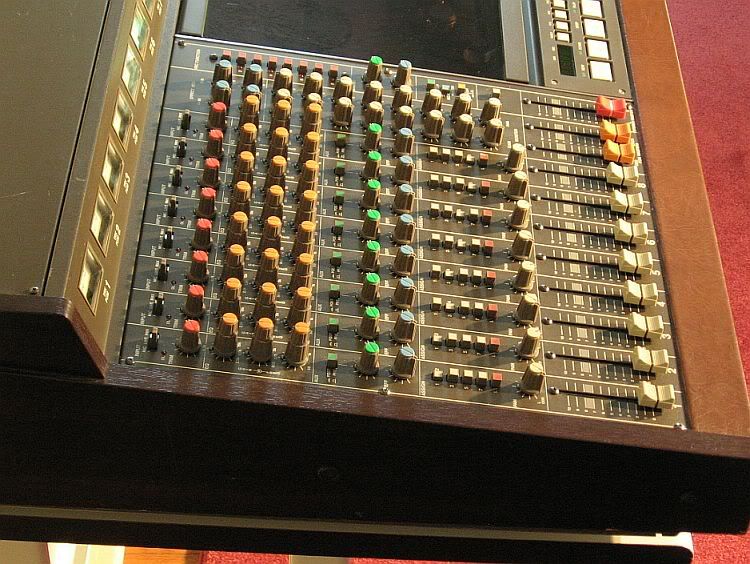
"You pretty much know what a Tascam 388 is, if you're looking at this page. Eight analog tracks on affordable and available 1/4" tape; with a full mixer included.
There's a lot more to it than that. There are mic preamps on every channel. The three eq controls on each channel are ALL sweepable. You can plug in to the channel or straight to the bus (more about that later). You can come right out of the tape preamp if you want, evading another pass through the channels, for higher fi. You can sync two 388s together. You can return to zero or to a cue point. There's an effects bus, a selectable pre/post aux output, and a separate monitor mix. And more, plenty more. This is not just a big Portastudio -- it is a real comprehensive tool for real work in real production facilities.
So what makes this particular 388 better than the others?
It has been Pooged. Pooge is an expression devised by Walt Jung, the engineer who researched and publicly exposed BOTH of the two most significant bottlenecks in quality audio in the chip age: Slew Rate limits and Dilectric Absorption. In this 388, all the channel op amps have been upgraded to 5532s, which are a fine-sounding audio chip whose imperfections are, for an IC, remarkably tubelike. And every one of these 5532s have been bandlimited (~70 kHz) to maintain closed loop performance to the limits of the chip itself. With expensive mica capacitors. You'd be surprised how seldom this is done, and how often manufacturers allow op amps to go into open-loop operation, which sends all kinds of spurious trash down into the audio.
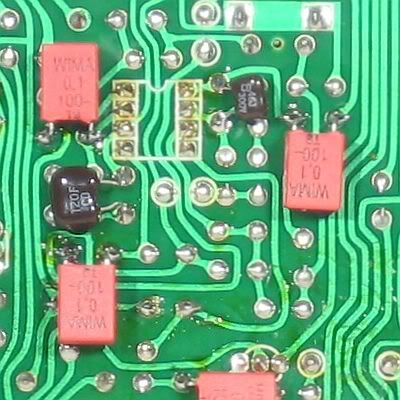
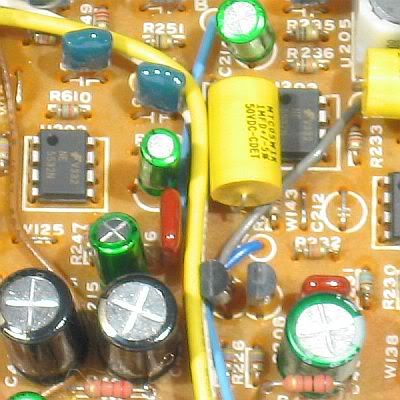
Furthermore, each coupling capacitor position has been meticulously recalculated (considering every possible load on every output) so as not to have an unnecessarily large (and overly problematic) cap at that particular point. And each of those caps has been replaced by a Nichicon Muse high-fidelity cap (except a couple of positions where a mylar film capacitor would fit). AND, each of those new capacitors has been bypassed with a WIMA polypropylene capacitor, calculated to carry the majority of the signal, leaving only the bass to the Nichicons.
And by the way, those 388 preamps sound great, with fat and juice that (pardon me for saying it again) is almost tubelike.
And by the way, the local power supply capacitors on the cards have been significantly increased with larger high-quality Muse components as well.
And by the way, all this work had been done by an annoyingly meticulous tech who became a tech because nobody else could do work that was acceptable to him, him being me.
The 388 will come with an original owner's manual with all setup information, full schematics (with a couple of corrections by Yours Truly) and circuit board layouts.
AND....THERE IS MORE....
I'll also put in a couple of auxilliary boxes I made for this machine. One of them has a 1/4" phone jack and a bunch of output tails that plug into the bus inputs available at the back, so you can 100% bypass the channel and go right to the r/p cards. The switch selects which bus you want to connect to. The cables are unshielded, presuming that you are using solid-state (~150 ohm) sources like op amps). They are, if you care, 99.99% pure copper in polyethylene insulation.
The other box is a little oscillator that plugs into, and is powered by, the external control jack on the 388. It permits a wider range of speed adjustment than the narrow range provided on the front panel.
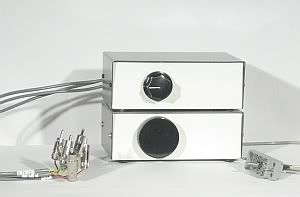
"Well, does that mean that I could crank the speed up to 11.25ips (between 7ips and 15ips), tweak the r/p trimpots to flatten out the frequency response, and get much better sound quality?"
My lips are sealed.
Happy Bidding!
PS I'm sorry to bloviate like this about this great machine but it really is a great machine.
PPS "We had this old Tascam from the Eighties with a reel-to-reel tape recorder inside the mixing board..." Billie Joe Armstrong talking about the Foxboro Hot Tubs album
PPS I forgot to mention that the chips in the r/p cards, the dbx, and the unbalanced output were upgraded as well. (I didn't use the balanced output.) I used some fancier chips in the areas that would see the whole mix. I forget exactly what's where. There are some 2134's, even a couple of 4562's (most recent design, relatively expensive, extremely clean) between the busses and the output."
...the other side of the coin.
______________________________________________

Bias, +3, +6,...+9 "hotter" tape, tape compression, cleaner vs warmer...etc.etc..as it applies to the 388
Thin 1800 foot tape would be out because of the higher output and print through issues, so a thicker backing would be needed.
Thicker, stiffer tape would be harder on the motors and heads. However, 456 is used by many on their 388 without issue. How much thicker and stiffer is high performance tape like GP9? Any high bias 1/4" formulas known for their supple transport travel?
Also, would the stock cards be adjustable enough to handle the signal? Are the 388?s electronics capable of being set to accept the levels and biasing for such high performance tape?
These things I ponder -M
Fantastic response and info Cory, and much appreciated. That clears up a big gap in my knowledge, and I?m sure helped out many others. I can remember Daniel "Cjacek" (homerecording) touting the thrills and joys of 407 all along, and I still went ahead and grabbed 15 reels of 457 upon Quantegy?s demise, because, hey man, it was the ?hotter? tape.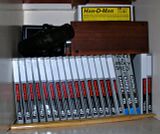
Now I finally realize, in the case of the Tascam 388, it?s all about pushing +3 tape for maximizing tape compression, if that?s what you?re after, while minimizing any stress the 388?s electronics (or messing up the dbx tracking with obscene levels if it's on), and that hotter tape just means a higher level clean signal before saturation/distortion. Big "aha!" moment..Many thanks!
_____________________________________________________
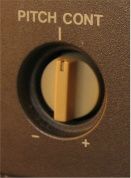
Pitch control tricks
Q: If I turn the pitch control full-up while tracking, will it improve the sound quality?
Beck of homerecording:
A: No not at all. It takes much more significant speed increase than what you'll get with a pitch control to make a measurable or audible difference. Best use that function as designed. And it can be very handy to adjust to instrument tunings such as acoustic piano and for vocalists who are singing just a bit beyond their range. Back the speed down as little as you have to get the vocalist within his realistic range. Then speed back up to normal speed, and voila! Your singer has just hit notes he really can't hit... and sound completely natural if not to extreme... lot better than auto tune. There are lots tricks you can do with tape pitch control, for effect and to fix a multitude of tuning problems.
You pretty much have to double tape speed before you will realize benefits. Impacting S/N, distortion, wow & flutter, etc. So don?t trouble yourself with 2 to 3 ips more speed. For all practical purposes it does nothing for you.
_____________
REFINISHING:
Tired of a Standard brown faced 388? The good folks at UnitedAudio.com can bring some bling to your deck with customized paint and reels.
(Click to Enlarge)
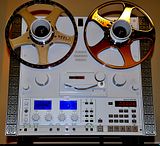
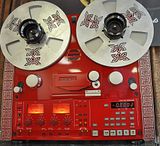
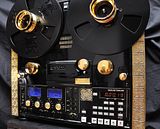
If anybody takes the plunge on this by all means post pics.
_____________________________________
link to
Gigantic pic of a Tascam 388 framed with custom solid wood armrest and siding by Ryan Supak
______________________________________
In case you've ever wondered what it would be like to electronically trick one of these out, this guy did it...
(Sold 06/21/09 for $1245.oo on ebay)
"Your one-time opportunity to own
a professionally (and intelligently) upgraded 388"

"You pretty much know what a Tascam 388 is, if you're looking at this page. Eight analog tracks on affordable and available 1/4" tape; with a full mixer included.
There's a lot more to it than that. There are mic preamps on every channel. The three eq controls on each channel are ALL sweepable. You can plug in to the channel or straight to the bus (more about that later). You can come right out of the tape preamp if you want, evading another pass through the channels, for higher fi. You can sync two 388s together. You can return to zero or to a cue point. There's an effects bus, a selectable pre/post aux output, and a separate monitor mix. And more, plenty more. This is not just a big Portastudio -- it is a real comprehensive tool for real work in real production facilities.
So what makes this particular 388 better than the others?
It has been Pooged. Pooge is an expression devised by Walt Jung, the engineer who researched and publicly exposed BOTH of the two most significant bottlenecks in quality audio in the chip age: Slew Rate limits and Dilectric Absorption. In this 388, all the channel op amps have been upgraded to 5532s, which are a fine-sounding audio chip whose imperfections are, for an IC, remarkably tubelike. And every one of these 5532s have been bandlimited (~70 kHz) to maintain closed loop performance to the limits of the chip itself. With expensive mica capacitors. You'd be surprised how seldom this is done, and how often manufacturers allow op amps to go into open-loop operation, which sends all kinds of spurious trash down into the audio.


Furthermore, each coupling capacitor position has been meticulously recalculated (considering every possible load on every output) so as not to have an unnecessarily large (and overly problematic) cap at that particular point. And each of those caps has been replaced by a Nichicon Muse high-fidelity cap (except a couple of positions where a mylar film capacitor would fit). AND, each of those new capacitors has been bypassed with a WIMA polypropylene capacitor, calculated to carry the majority of the signal, leaving only the bass to the Nichicons.
And by the way, those 388 preamps sound great, with fat and juice that (pardon me for saying it again) is almost tubelike.
And by the way, the local power supply capacitors on the cards have been significantly increased with larger high-quality Muse components as well.
And by the way, all this work had been done by an annoyingly meticulous tech who became a tech because nobody else could do work that was acceptable to him, him being me.
The 388 will come with an original owner's manual with all setup information, full schematics (with a couple of corrections by Yours Truly) and circuit board layouts.
AND....THERE IS MORE....
I'll also put in a couple of auxilliary boxes I made for this machine. One of them has a 1/4" phone jack and a bunch of output tails that plug into the bus inputs available at the back, so you can 100% bypass the channel and go right to the r/p cards. The switch selects which bus you want to connect to. The cables are unshielded, presuming that you are using solid-state (~150 ohm) sources like op amps). They are, if you care, 99.99% pure copper in polyethylene insulation.
The other box is a little oscillator that plugs into, and is powered by, the external control jack on the 388. It permits a wider range of speed adjustment than the narrow range provided on the front panel.

"Well, does that mean that I could crank the speed up to 11.25ips (between 7ips and 15ips), tweak the r/p trimpots to flatten out the frequency response, and get much better sound quality?"
My lips are sealed.
Happy Bidding!
PS I'm sorry to bloviate like this about this great machine but it really is a great machine.
PPS "We had this old Tascam from the Eighties with a reel-to-reel tape recorder inside the mixing board..." Billie Joe Armstrong talking about the Foxboro Hot Tubs album
PPS I forgot to mention that the chips in the r/p cards, the dbx, and the unbalanced output were upgraded as well. (I didn't use the balanced output.) I used some fancier chips in the areas that would see the whole mix. I forget exactly what's where. There are some 2134's, even a couple of 4562's (most recent design, relatively expensive, extremely clean) between the busses and the output."
...the other side of the coin.
Click here for Sweetbeats detailed take-it-all-apart-and-put-it-back-together Tascam 388 refurb and recap (with many) pictorial thread ..sweetbeats of homerecording.com said:
In theory it would be cleaner, more dynamic and quieter, but I don't know enough about all the mods that were done to say more and it all depends so much on the design of the unit itself and that gets over my head. In the end though, I think enough of us agree around here that the 388 is a great sounding piece of equipment in its original form, and it is clear that the seller did some illogical stuff too. I wouldn't have paid $1245 for for sure, particularly when there is questionable logic. "Better" is so subjective y'know? And sometimes what we like about a piece of gear, unbeknownst to us, is the noise and distortion. Sometimes you castrate a piece of gear by making it "better".
______________________________________________

Bias, +3, +6,...+9 "hotter" tape, tape compression, cleaner vs warmer...etc.etc..as it applies to the 388
Just thinking out loud here with hypotheticals, and trying to get the facts straight as far as what would be required for running high bias modern tape on the 388.sweetbeats wrote: Modding is neat and fun, but is in no way a guarantee of better results, and opens the door to irreparable damage.
Thin 1800 foot tape would be out because of the higher output and print through issues, so a thicker backing would be needed.
Thicker, stiffer tape would be harder on the motors and heads. However, 456 is used by many on their 388 without issue. How much thicker and stiffer is high performance tape like GP9? Any high bias 1/4" formulas known for their supple transport travel?
Also, would the stock cards be adjustable enough to handle the signal? Are the 388?s electronics capable of being set to accept the levels and biasing for such high performance tape?
These things I ponder -M
sweetbeats of homerecording wrote: Quote:
456 is used by many on their 388 without issue. Is it the same thickness and stiffness as high performance tape like GP9?
GP9 is about 0.2mil thicker (456 = 1.93mil total, GP9 2.13mil)
Quote:
would the stock cards be adjustable enough to handle the signal? Are the 388?s electronics capable of being set to accept the levels and biasing for such high performance tape?
Ultimately you'd have to try it out, but here is what I am pretty sure you will find:
* That the bias amps are either not robust enough to pump the bias level, or at the very least you'd need to mod the bias cards to allow more current which is what is necessary in the likes of the 58 and MS16 systems...not sure about later decks. I would be really surprised if the 388 bias amps had enough headroom to bias "+9" tape, and if they do there is always the question as to whether or not you are going to damage something by running it at that constantly. Think of a car...yeah the tach in my old Subaru says I can wind the engine up to over 6,000rpm, but we all know if I drove it around like that all the time it would most certainly (and I believe drastically) reduce the life of the engine.
* Even if you could get the bias issue resolved (assuming there IS one), I betcha the R/P amps would be stretched before being able to take advantage of the headroom on +9 tape. I bet it would work, but there may be sonic artifacts that leave you going "was this worth it?" Remember, program peaks, especially on things like percussion, are WAYYY over the nominal level...that's why you see the peak LED's flickering and the VU needle is hardly pushing 0...those peak LED's typically light at +10 or +12. Now let's say you cal the deck using a 355nWb/m standard, now those same peaks will be at around +13~+15 maybe? That's getting up there. Not sure at what level the 388 R/P amps clip. The amps in my Ampex MM-1000 aren't rated to clip until +28 or +29 and I'm pretty sure the 388 amps aren't up in that range. If the goal is to get tape saturation then you want to leave enough headroom in the setup so you stay far away from overdriving the electronics.
YMMVyadayadablahblah.
I realize you are just thinking "out-loud" so I don't want to sound like I'm over-reacting to your musings, but the reality is that whatever discussions we have had on this forum over using +9 tape on any number of 1/2" 8-track decks from Tascam would certainly be more acute with the 388 since it is a transport very explicitly designed for "1.0mil" +6 tape. I just don't see the benefit of "going-there".
Somebody tell me if I've got it wrong...the only substantial reason to use "hotter" tape is to increase headroom to create greater sonic distance between the program level on tape and the noise floor...right? Tape formulations on +9 tapes may elicit a different or specific "flavor" but the whole hoo-hah about higher and higher output tapes is NOT because the tape in and of itself is "hotter" or "phatter" or "louder" or "dripping with tape 'compression'" or whatever...its just simply this:
The higher the tape rating (the consumer +3, +6, +9 figure), the more signal the tape can handle before presenting a industry standard distortion rating of 3%.
This means that the recorded material can be tracked "hotter" on that tape than a lower output level tape and still be "clean" and since the tape noise does not increase with a "hotter" tape you've just gained more distance between your program material and the tape noise.
So if low noise is an issue (i.e. tape hiss), then maybe +9 or greater tape is the solution. If you want crunchy-yummy tape distortion on a 388 then maybe 407 is the answer...print-through is an issue on thinner tape. 407 is a 1.0mil +3 tape which means you'll be able to drive the tape into distortion (hopefully nice yummy third-order harmonic distortion) while being more kind to your R/P amps AND while keeping print-through from being as much of an issue. YES you are closer to the tape noise floor but my guess is that if you (not YOU specifically , shed, but whoever is reading this) are wanting to push/saturate the tape you aren't tracking solo acoustic guitar...it is probably something with drums and electric instruments and I challenge you to hear the tape noise on properly biased 407 as the cymbals rage and the guitars crunch. Yes there are all levels of dynamics and tones in the music style I'm hinting at but I'm just trying make a point with that example.
No matter what, ANY machine and tape selection is going to be a process of compromises but if you are clear on what you are going for it should be obvious what tape to use and how to use the machine within its scope, and for most stuff I'm thinking LPR35/457 is ideal for the 388 and if it was high energy stuff I might even try using a LOWER output tape like 407.
Am I discouraging you from trying? I hope not. You might love the result and if that's the case more power to you...I'm just trying to make the point that the desired performance or result from the machine may be achieved in a much better way that seems backwards by being mindful of the tape selection and understanding what the numbers really mean. You might try GP9 and compare to to 407 and like the latter better because the deck itself isn't running at "7,000rpm" or even "5,000rpm" and the results you hear are the tape being pushed rather than the electronics.
Am I knocking folks who mod their decks to properly bias and drive higher output tape? Certainly not! I just know after going through all kinds of thoughts about "I wonder if..." and "I wonder what..." I came to realize that most of the time it wasn't worth the hassle when I considered all the unknown variables and when I came to understand the drivers behind the super-high output tapes, and when I came to understand what the numbers mean and how to use operating level to my advantage.
Know and understand your goal and the purpose behind it. Then choose the path to get there.
I'll use evm1024 (homerecording member) as an example...he's modding/modded the bias circuit on his Tascam 58 R/P cards to properly bias super-high output tape. This is a known solution to a known issue with those amp cards when using +9 tape...the bias amps can handle it but the (Ethan, correct me if I'm wrong here) feedback loop in the stock bias trimmer circuit provides for a trim window that, at best, just barely biases +9 tapes. In most cases it doesn't quite get there. The mod adjusts that window by raising the ceiling on the feedback loop so that the bias level trimmer can dial in more gain. This also means that that "window" may now be to high for lower output tapes because the low end of the trim range may now not be low enough, sending too much bias to low-output tapes. That's the compromise. But outside of that we know (by field-tested results and educated analysis that people like Ethan possess) that the bias amps are safe to produce that level on a routine basis. And WHY did he do it? Ethan has a focus on tracking acoustic instrumentation...classical compositions...he likes pipe organs too. These are sensitive sources that often leave tape noise exposed and can be problematic with nosie reduction. Higher output tape is the natural solution. The bottom line is that he's got a specific need to use hgher output tape and is educated and experienced in the area of electronics to be able to design the circuit level solutions.
Getting off the box now. And I CERTAINLY hope this doesn't feel like I'm lecturing you, shedshrine...What I'm saying is (hopefully) for the good of the order and I'm just sharing things that have come to settle in my mind as a result of the same kinds of thoughts and questions you are pondering and posting. So thanks for the question. I feel it is a really, really good and important topic.
Fantastic response and info Cory, and much appreciated. That clears up a big gap in my knowledge, and I?m sure helped out many others. I can remember Daniel "Cjacek" (homerecording) touting the thrills and joys of 407 all along, and I still went ahead and grabbed 15 reels of 457 upon Quantegy?s demise, because, hey man, it was the ?hotter? tape.

Now I finally realize, in the case of the Tascam 388, it?s all about pushing +3 tape for maximizing tape compression, if that?s what you?re after, while minimizing any stress the 388?s electronics (or messing up the dbx tracking with obscene levels if it's on), and that hotter tape just means a higher level clean signal before saturation/distortion. Big "aha!" moment..Many thanks!
_____________________________________________________

Pitch control tricks
Q: If I turn the pitch control full-up while tracking, will it improve the sound quality?
Beck of homerecording:
A: No not at all. It takes much more significant speed increase than what you'll get with a pitch control to make a measurable or audible difference. Best use that function as designed. And it can be very handy to adjust to instrument tunings such as acoustic piano and for vocalists who are singing just a bit beyond their range. Back the speed down as little as you have to get the vocalist within his realistic range. Then speed back up to normal speed, and voila! Your singer has just hit notes he really can't hit... and sound completely natural if not to extreme... lot better than auto tune. There are lots tricks you can do with tape pitch control, for effect and to fix a multitude of tuning problems.
You pretty much have to double tape speed before you will realize benefits. Impacting S/N, distortion, wow & flutter, etc. So don?t trouble yourself with 2 to 3 ips more speed. For all practical purposes it does nothing for you.
_____________
REFINISHING:
Tired of a Standard brown faced 388? The good folks at UnitedAudio.com can bring some bling to your deck with customized paint and reels.
(Click to Enlarge)



If anybody takes the plunge on this by all means post pics.
_____________________________________
link to
Gigantic pic of a Tascam 388 framed with custom solid wood armrest and siding by Ryan Supak
______________________________________
Last edited by shedshrine on Thu Apr 25, 2013 3:15 pm, edited 13 times in total.
-
williambslack
- audio school
- Posts: 2
- Joined: Thu Sep 24, 2009 9:48 am
- Location: Texas
tascam 388 preamps
Has anyone here used the 388's preamps straight into a digi 002?
I have both, and prefer to record to tape, obviously, but wanted to know if I should get good results simply using the pre's into pro tools. The digi pre's just annoy me, plus there's only the four. If this could work, how should I hook it up? I think I read somewhere that the 388 outputs at -10 (is that thru the pgm outs?) The digi has selectable +4/-10 for matching up on four of the channels, but on the line-ins with preamps i have no idea how to match up.
any ideas are appreciated. THANKS for all the helpful posts.
p.s. here's some specs on the digi 002 that MAY be relevant, though i only halfway (at most) understand this stuff:
Specifications for Digi 002.
A/D
Max Input:
* Inputs 1-4 (mic): +3 dBu
* Inputs 1-4 (line): +18 dBu
* Inputs 5-8 (line/+4 mode): +18 dBu
Gain Range:
* Inputs 1-4: Mic Setting: +18 ? +65 dB; Line/DI Setting: +0 ? +50 dB
* Inputs 5-8 ? fixed +4 dBu or -10 dBV
I have both, and prefer to record to tape, obviously, but wanted to know if I should get good results simply using the pre's into pro tools. The digi pre's just annoy me, plus there's only the four. If this could work, how should I hook it up? I think I read somewhere that the 388 outputs at -10 (is that thru the pgm outs?) The digi has selectable +4/-10 for matching up on four of the channels, but on the line-ins with preamps i have no idea how to match up.
any ideas are appreciated. THANKS for all the helpful posts.
p.s. here's some specs on the digi 002 that MAY be relevant, though i only halfway (at most) understand this stuff:
Specifications for Digi 002.
A/D
Max Input:
* Inputs 1-4 (mic): +3 dBu
* Inputs 1-4 (line): +18 dBu
* Inputs 5-8 (line/+4 mode): +18 dBu
Gain Range:
* Inputs 1-4: Mic Setting: +18 ? +65 dB; Line/DI Setting: +0 ? +50 dB
* Inputs 5-8 ? fixed +4 dBu or -10 dBV
-
ndecarmine
- audio school graduate
- Posts: 16
- Joined: Tue Apr 07, 2009 8:29 am
- Location: ATX
Have been recording on one of these recently and love working with it.
Going to check one out and wanted to know if there were any special things to look for concerning the heads/head wear/etc?
I'll check the other functions as best I can to make sure the transports etc are working properly. The price Ive seen on this one is very good so I don't mind having to put some extra $ into it, just want to make sure I'm not buying an out & out lemon.
Going to check one out and wanted to know if there were any special things to look for concerning the heads/head wear/etc?
I'll check the other functions as best I can to make sure the transports etc are working properly. The price Ive seen on this one is very good so I don't mind having to put some extra $ into it, just want to make sure I'm not buying an out & out lemon.
- shedshrine
- deaf.
- Posts: 1868
- Joined: Tue Jun 01, 2004 5:47 pm
- Location: sf bay area
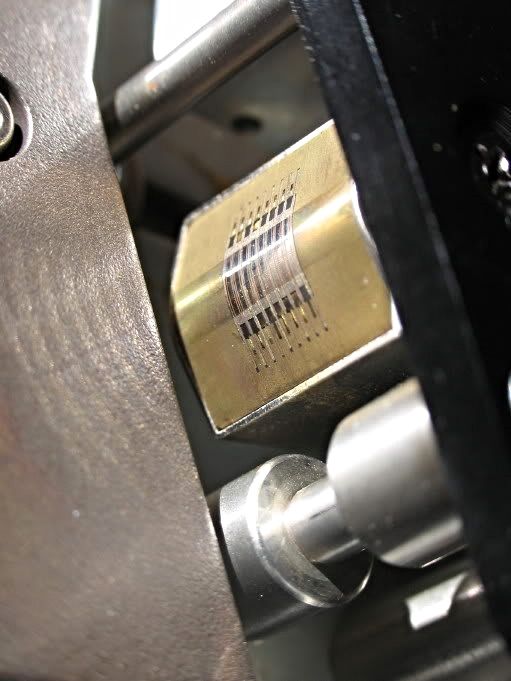
Here's what a new 388 record/playback head looks like (from earlier in this thread).
Also notice the tape lifter to the left and the guide to the right are smooth with no flat spots yet.
Tascam analog support said the last replacement heads they had were sold out in 2003.
He also explained that after they tool up for production and the run ends, the tooling blocks are scrapped so that's that.
JRF magnetics no longer carries them, as the originals are sold out and their current supplier could not reproduce them to Tascam's original specs,
crosstalk noise was unacceptable. "Tascam was really proud of that head design".
He went on to say that relapping the two heads from a 388 would run $280.00. (as of 02/04/2011)
For and additional $50 they will create edge relief slots that will help prevent the tape edges riding harder
on the outside edges causing tracks 1 and 8 wear the head faster.
_________________________________________________________________
Ampex/Quantegy vs RMGi etc regarding tape width and headwear
"Ampex/Quantegy tape is ever so slightly more NARROW in width. Ampex tape slitting equipment was not as precise as pretty much everybody else's,
and Ampex made their width spec slightly more narrow than the standard to avoid their tape being WIDER than the standard. The downside to this
is Ampex/Quantegy tape "country-laning" in the tape path if the guides are set for or if a wear pattern was created by tape precision slit to the
international standard (this includes EMTEC, RMGI, 3M, etc.) If your heads have edge slots, no worries. If they don't, or if your guides/lifters have
significant wear patterns that were created by Ampex/Quantegy tape, then you may have edge shed issues or edge track issues when you switch
to tape that was slit "right". You may want to rotate your guides and lifter posts (if they show grooved wear)"
________________________________________________________________________________________________________

Not heads from a 388, but good example shots of head condition:
"The following pics show a brand new head (A),
a used but at 80% still very good condition head (B),
a totally worn head in regular way (C)
and a totally worn one in wrong way due to zenith angle problem (D)."
http://www.soundfan.it/en/tips&tricks_en.html
Last edited by shedshrine on Thu Nov 10, 2011 4:21 pm, edited 5 times in total.
-
HumansAreAnalog
- audio school
- Posts: 1
- Joined: Tue Apr 27, 2010 1:47 pm
I just got one yesterday...I call her...Ramona
I almost creamed my pants when I first saw it! Seeing one for the first time in person...how magnificent! To finally be able to touch one for the first time brought a tear to my eye. Look...she's even winking at you!

[/img]

[/img]
-
WHooper
- audio school graduate
- Posts: 19
- Joined: Thu Jul 16, 2009 7:25 pm
- Location: Perth, Australia.
- Contact:
Can I join the club?
Just picked this up. 300 AUD. Heads in very good condition but needs some work to make the tapes move. It's not easy finding the good stuff in Western Australia so I almost fell over when I found out someone was selling this 2 streets away. He had 2.
-
joel hamilton
- zen recordist
- Posts: 8876
- Joined: Mon May 19, 2003 12:10 pm
- Location: NYC/Brooklyn
- Contact:
Hello folks.
I really need some help. i will read this WHOLE thread but for now...
My TASCAM 388 machine has been squeaking/screeching.
I guess it must have started after I bought a bunch of tape off ebay.
maybe. I dunno.
I bought some 406 and 407. I was told it was the same as 456 & 457.
I sent it to a guy to work on (two guys actually) and I FINALLY got it back yesterday. It's been a year, maybe more.
Anyhow...
It sounded lame and I cleaned it and it sounded great for about the time it took me to track a song.
I've mainly used 457 tape but have used 456 tape as well.
I'd never had any problems.
Now I clean the heads. It works fine for a bit and then it squeaks and I have to clean again. I dunno what's going on.
Is my tape right?
Is 91% Isoprophl right? (I can't spell it)
Is it possible I just got some bad tape?
where can I get some good tape?
o.k.
help please. I love this machine. I've made many records on it. It's kinda important to me.
thanks.
- Jon
PS I need to demagnetize it. Could this be it?
I'm bummed.
I really need some help. i will read this WHOLE thread but for now...
My TASCAM 388 machine has been squeaking/screeching.
I guess it must have started after I bought a bunch of tape off ebay.
maybe. I dunno.
I bought some 406 and 407. I was told it was the same as 456 & 457.
I sent it to a guy to work on (two guys actually) and I FINALLY got it back yesterday. It's been a year, maybe more.
Anyhow...
It sounded lame and I cleaned it and it sounded great for about the time it took me to track a song.
I've mainly used 457 tape but have used 456 tape as well.
I'd never had any problems.
Now I clean the heads. It works fine for a bit and then it squeaks and I have to clean again. I dunno what's going on.
Is my tape right?
Is 91% Isoprophl right? (I can't spell it)
Is it possible I just got some bad tape?
where can I get some good tape?
o.k.
help please. I love this machine. I've made many records on it. It's kinda important to me.
thanks.
- Jon
PS I need to demagnetize it. Could this be it?
I'm bummed.
- shedshrine
- deaf.
- Posts: 1868
- Joined: Tue Jun 01, 2004 5:47 pm
- Location: sf bay area
See the big reel picture with the RMGI blue box a couple posts up on this page. That is good,currently available tape.
If you have to clean after every take, you have bad sticky shed tape. Toss it.
(and yes snodgrass, 91% is great for cleaning)
____________________________________________________________________
Begin open letter:
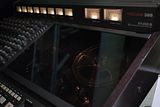
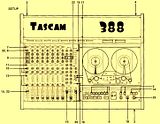
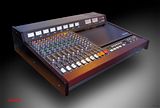
If you are, or are interested in becoming a 388 owner, I highly reccommend reading this thread front to back.
While harldy an expert, I've been adding info from those who are to this thread in an attempt to get all the "good" info I could find on the 388 and store it in one place.
I realize it's getting kind of lengthy, and will not cover every possible issue,
but if you are willing to do a little homework here many of your questions will be answered,
and we won't have to repeat ourselves endlessly and lose what conciseness this thing has left.
EDIT: Who am I kidding, ask away. I will continue to edit the first 8 pages though, adding stuff as you guys bring more nuggets of wisdom.
As for seriously technical inside the guts repairs and diagnostics, I must mention that currently Cory, aka "sweetbeats" is holding court over on homerecording's "analog only" forum.
I really hope we don't wear him out as he has been incredibly helpful, patient and generous with his time and knowledge, walking people through their 388 technical difficulties. He is the man.
_________________________________________________
National Technology Alliance Library on sticky shed syndrome
http://www.clir.org/pubs/reports/pub54/2what_wrong.html

Figure 2. Cross Section of Magnetic Tape Magnetic particles are held together with a binder coated on a film substrate. Lubricant and other agents (not shown) may also be included in the top coat layer. A back coat may also be added to control friction and static charges. The structure of the top coat is analogous to that of Jell-O filled with grapes where the grapes represented the magnetic particles and the Jell-O represented the binder.
The binder also has the function of providing a smooth surface to facilitate transportation of the tape through the recording system during the record and playback processes. Without the binder, the tape surface would be very rough, like sandpaper. Other components are added to the binder to help transport the tape and facilitate information playback. A lubricant is added to the binder to reduce friction, which reduces the tension needed to transport the tape through the recorder and also reduces tape wear. A head cleaning agent is added to the binder to reduce the occurrence of head clogs that result in dropouts. Carbon black is also added to reduce static charges, which attract debris to the tape.
The backing film, or substrate, is needed to support the magnetic recording layer, which is too thin and weak to be a stand-alone film layer. In some tape systems, a back coat is applied to the backside of the tape substrate layer.
A back coat reduces tape friction, dissipates static charge, and reduces tape distortion by providing a more uniform tape pack wind on the tape reel
Binder Degradation
The binder is responsible for holding the magnetic particles on the tape and facilitating tape transport. If the binder loses integrity - through softening, embrittlement, loss of cohesiveness, or loss of lubrication - the tape may become unplayable. Sticky tape and sticky shed are commonly used terms to describe the phenomenon associated with deterioration of the magnetic tape binder.
The binder polymers used in magnetic tape constructions are subject to a chemical process known as hydrolysis. In this process, long molecules are broken apart by a reaction with water to produce shorter molecules. The shorter molecules do not impart the same degree of integrity to the binder system as do the longer molecules. As in a wool sweater, if enough individual yarns are cut, the sweater will eventually fall apart.
Specifically, it is the polyester linkages in the commonly used polyester polyurethane-based binder systems that undergo scission (are broken) by water molecules. Water must be present for the hydrolysis reaction to occur. Furthermore, the more water that is present, the more likely it is that polyester chains will be broken. The binder polymer will absorb water from the air. It will absorb more water in a high humidity environment than a low humidity one. This process is analogous to that observed for open bags of crackers, potato chips, and breakfast cereals: They will loose their crunch quickly on humid, summer days (80 to 90% RH) as they absorb high amounts of moisture from the air. In the winter, however, indoor humidities generally can be lower (10 to 20% RH), less moisture is absorbed from the air, and the snacks never seem to get as stale.
____________________________________________
Which Ampex tape is sticky shed tape?
Some help choosing tape
______________________________________________
If you have stuff recorded on sticky shed tape and want to save it, get a food dehydrator and bake the tape:
http://www.tangible-technology.com/tape/baking1.html
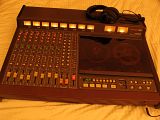
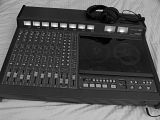
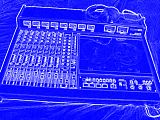
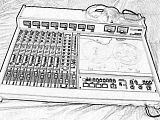
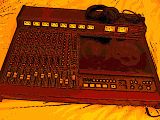
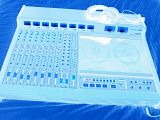
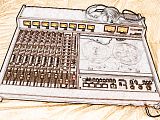
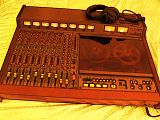
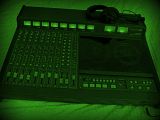
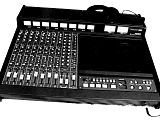
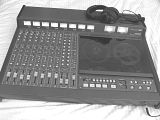
If you have to clean after every take, you have bad sticky shed tape. Toss it.
(and yes snodgrass, 91% is great for cleaning)
____________________________________________________________________
Begin open letter:



If you are, or are interested in becoming a 388 owner, I highly reccommend reading this thread front to back.
While harldy an expert, I've been adding info from those who are to this thread in an attempt to get all the "good" info I could find on the 388 and store it in one place.
I realize it's getting kind of lengthy, and will not cover every possible issue,
but if you are willing to do a little homework here many of your questions will be answered,
and we won't have to repeat ourselves endlessly and lose what conciseness this thing has left.
EDIT: Who am I kidding, ask away. I will continue to edit the first 8 pages though, adding stuff as you guys bring more nuggets of wisdom.
As for seriously technical inside the guts repairs and diagnostics, I must mention that currently Cory, aka "sweetbeats" is holding court over on homerecording's "analog only" forum.
I really hope we don't wear him out as he has been incredibly helpful, patient and generous with his time and knowledge, walking people through their 388 technical difficulties. He is the man.
_________________________________________________
National Technology Alliance Library on sticky shed syndrome
http://www.clir.org/pubs/reports/pub54/2what_wrong.html

Figure 2. Cross Section of Magnetic Tape Magnetic particles are held together with a binder coated on a film substrate. Lubricant and other agents (not shown) may also be included in the top coat layer. A back coat may also be added to control friction and static charges. The structure of the top coat is analogous to that of Jell-O filled with grapes where the grapes represented the magnetic particles and the Jell-O represented the binder.
The binder also has the function of providing a smooth surface to facilitate transportation of the tape through the recording system during the record and playback processes. Without the binder, the tape surface would be very rough, like sandpaper. Other components are added to the binder to help transport the tape and facilitate information playback. A lubricant is added to the binder to reduce friction, which reduces the tension needed to transport the tape through the recorder and also reduces tape wear. A head cleaning agent is added to the binder to reduce the occurrence of head clogs that result in dropouts. Carbon black is also added to reduce static charges, which attract debris to the tape.
The backing film, or substrate, is needed to support the magnetic recording layer, which is too thin and weak to be a stand-alone film layer. In some tape systems, a back coat is applied to the backside of the tape substrate layer.
A back coat reduces tape friction, dissipates static charge, and reduces tape distortion by providing a more uniform tape pack wind on the tape reel
Binder Degradation
The binder is responsible for holding the magnetic particles on the tape and facilitating tape transport. If the binder loses integrity - through softening, embrittlement, loss of cohesiveness, or loss of lubrication - the tape may become unplayable. Sticky tape and sticky shed are commonly used terms to describe the phenomenon associated with deterioration of the magnetic tape binder.
The binder polymers used in magnetic tape constructions are subject to a chemical process known as hydrolysis. In this process, long molecules are broken apart by a reaction with water to produce shorter molecules. The shorter molecules do not impart the same degree of integrity to the binder system as do the longer molecules. As in a wool sweater, if enough individual yarns are cut, the sweater will eventually fall apart.
Specifically, it is the polyester linkages in the commonly used polyester polyurethane-based binder systems that undergo scission (are broken) by water molecules. Water must be present for the hydrolysis reaction to occur. Furthermore, the more water that is present, the more likely it is that polyester chains will be broken. The binder polymer will absorb water from the air. It will absorb more water in a high humidity environment than a low humidity one. This process is analogous to that observed for open bags of crackers, potato chips, and breakfast cereals: They will loose their crunch quickly on humid, summer days (80 to 90% RH) as they absorb high amounts of moisture from the air. In the winter, however, indoor humidities generally can be lower (10 to 20% RH), less moisture is absorbed from the air, and the snacks never seem to get as stale.
____________________________________________
Which Ampex tape is sticky shed tape?
Tim Beck of homrecording:
Sticky Shed help thread
The binder problem known as sticky-shed-syndrome (SSS) did not manifest itself in the ?80s when the tapes were new? it took several years for tape to breakdown. It breaks down whether used or still sealed new-old-stock.
It affects all sizes of 456/457, 406/407, as well as other brands and types from ?? to 2?.
If it?s in the worst stage of SSS it?s a mess to get the tape path clean.
If a tape has a binder problem it will usually slow the machine down -- maybe even stop it. When it does run it may make a squealing sound. Really bad shedding will leave thin strips of tape and obvious sticky residue behind on the tape path. You can hear it peeling off. It's really awful.
Late 1994 is officially when Ampex changed to the new formula. Anything before that could develop sticky-shed. The reason you hear more about tapes from the 70's and 80's is because it takes time for the binder to deteriorate. Also the whole mess was discovered when studios tried to use archived tape from that time period to remaster and release old albums on CD.
Magnetic Reference Laboratory (MRL) puts the new tape at anything after early 1995 -- probably just to be on the safe side.
"I've never personally had any Maxell XL that had the binder problem. I've had problems with all my Ampex 456 from 1986 through 1993 production. 1994 and after is still like-new."
"A lot of the 7" don't have date labels on the outside. Check the address on the back. It will either say Opelika Alabama or Redwood City California. If it says Opelika it's good. It might be good even if it says Redwood City, but they changed the box style a little before they changed the formula, so some with that box style are vulnerable to sticky shed.
The ones with the AMPEX logo in the middle of the box are from 1993 and older. They are using the old binder. There?s a good chance the box with the logo across the bottom will be fine. Unfortunately, the date for those is usually on the hold-down tape on the reel, which means you have to break the seal to see when it was made. The catch being the tape is no longer ?sealed in box? after you?ve checked. "
-Tim
cjacek of homerecording:
Nor do "Whale Oil" lubricated tapes, such as the Maxell UD line. The problem seems to be only with the backcoated mastering tapes that used urethane binders. The only tapes that get sticky-shed are non-Japanese backcoated mastering tapes from the seventies and early eighties plus certain pre 1995 (1986-1993) Ampex tapes. Quantegy doesn't have this problem as it uses the new improved binder.
~Daniel
Some help choosing tape
______________________________________________
If you have stuff recorded on sticky shed tape and want to save it, get a food dehydrator and bake the tape:
http://www.tangible-technology.com/tape/baking1.html











Last edited by shedshrine on Thu Nov 12, 2020 6:21 pm, edited 18 times in total.
Who is online
Users browsing this forum: No registered users and 39 guests
